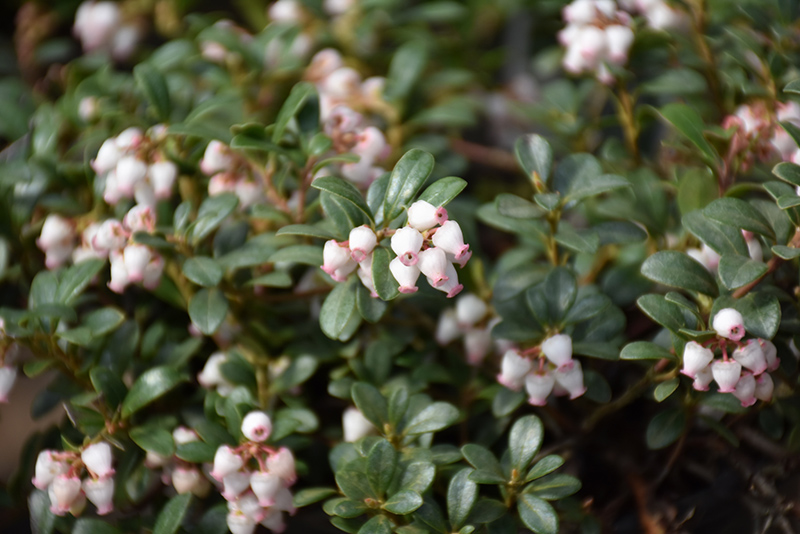Kinnikinnick, Massachusetts Arctostaphylos uva-ursi 'Massachusetts' Height: 12 inches Spread: 15 feet
Sunlight:
Hardiness Zone: 2b Other Names: Bearberry Description: An extremely hardy and tough groundcover requiring poor acidic sandy soil; low growing; whitish-pink flowers in spring, red fruits and reasonable fall color Ornamental Features Kinnikinnick, Massachusetts features dainty nodding shell pink bell-shaped flowers at the ends of the branches in mid spring. It features an abundance of magnificent red berries from late summer to late fall. It has forest green evergreen foliage. The tiny glossy round leaves turn burgundy in the fall, which persists throughout the winter. Landscape Attributes Kinnikinnick, Massachusetts is a multi-stemmed evergreen shrub with a ground-hugging habit of growth. Its relatively fine texture sets it apart from other landscape plants with less refined foliage. This is a relatively low maintenance shrub, and should not require much pruning, except when necessary, such as to remove dieback. It has no significant negative characteristics. Kinnikinnick, Massachusetts is recommended for the following landscape applications; Planting & Growing Kinnikinnick, Massachusetts will grow to be about 12 inches tall at maturity, with a spread of 15 feet. It tends to fill out right to the ground and therefore doesn't necessarily require facer plants in front. It grows at a medium rate, and under ideal conditions can be expected to live for approximately 20 years. This shrub does best in full sun to partial shade. It does best in average to evenly moist conditions, but will not tolerate standing water. This plant should be periodically fertilized throughout the active growing season with a specially-formulated acidic fertilizer. It is particular about its soil conditions, with a strong preference for sandy, acidic soils, and is able to handle environmental salt. It is somewhat tolerant of urban pollution. This is a selection of a native North American species. Special Attributes Evergreens need to be watered during the winter. Our desert climate especially in late winter to early spring evergreens can suffer during next growing season. An easy way to remember check for dryness on the holidays Halloween, Thanksgiving, New Year's Day, Valentines Day & Easter.![]()
![]()
![]()
![]()
![]()
![]()
![]()
![]()
![]()
![]()

